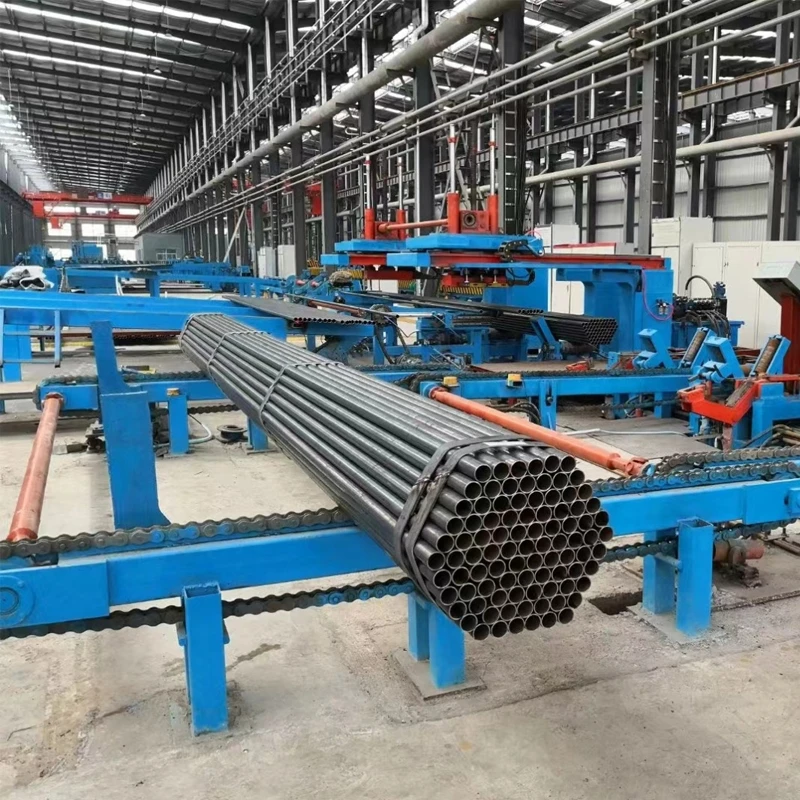steel coil decoiler
Understanding Steel Coil Decoilers An Essential Tool in Metal Processing
In the realm of metal processing, steel coil decoilers play a vital role in managing the storage, handling, and processing of steel coils. These machines are designed specifically to unwind or decoil steel coils, making them ready for further manufacturing processes such as cutting, forming, and welding. Given the significant application of steel in various industries, the decoiler is an essential equipment component that enhances efficiency and productivity in manufacturing.
The Functionality of Steel Coil Decoilers
At its core, a steel coil decoiler serves as a critical interface between the raw steel material and the manufacturing process. The decoiling process involves taking a tightly wound coil of steel and unwinding it into a usable length. This functionality is crucial for automated production lines where precision and speed are key. Decoilers normally come with features such as adjustable tension control to ensure that the unwinding process does not damage the steel, which could lead to costly waste.
Decoilers can be categorized based on their design and operation modes. For instance, there are manual decoilers, which require operator intervention, and automated decoilers equipped with sensors and programmable logic controllers (PLCs) that allow for seamless integration into a fully automated system. The choice of decoiler largely depends on the scale of operations and the specific requirements of the manufacturing process.
Types of Steel Coil Decoilers
1. Hand Crank Decoilers These are manual units suitable for small operations. The operator manually adjusts the tension and unwinds the coil as needed. While less efficient, they are cost-effective for smaller workshops.
2. Electric Decoilers Powered by motors, these machines can handle larger coils and provide greater control over the decoiling tension and speed. They are a common choice in medium to large manufacturing facilities.
3. Heavy-Duty Decoilers Designed for high-volume production, these units can support coils of significant weight and diameter. They often feature advanced controls and safety systems to manage the operational risks associated with moving heavy metal.
steel coil decoiler

Applications of Steel Coil Decoilers
Steel coil decoilers are instrumental in numerous applications across different industries. They are predominantly used in automotive manufacturing, where steel components are required in large quantities and varying shapes. The construction industry also relies on decoilers for the preparation of structural steel and reinforcement bars.
Furthermore, decoilers are essential in fabricating industries, such as those that produce HVAC systems, metal furniture, and appliances. In these sectors, companies depend on decoilers to ensure that their metal processing is both efficient and accurate.
Innovations in Decoiling Technology
As technology continues to evolve, so do the capabilities of steel coil decoilers. Modern decoilers may incorporate features such as automatic feeding, controlled braking systems, and advanced safety mechanisms to minimize risks. Moreover, the integration of digital technologies allows for real-time monitoring of coil conditions and enhanced operational control.
Additionally, some advanced decoilers now come equipped with data analytics capabilities, providing manufacturers with insights that can help streamline processes, predict maintenance needs, and improve overall productivity.
Conclusion
In conclusion, steel coil decoilers are an indispensable component of the metal processing industry. Their ability to efficiently and safely unwind coils of steel makes them a critical tool that supports various manufacturing processes across multiple sectors. With ongoing technological advancements, these machines are poised to become even more efficient and integral to the future of metal production, ensuring that businesses can meet the increasing demands of a fast-paced and evolving market. Understanding the significance of steel coil decoilers can help manufacturers optimize their operations and maintain competitiveness in the industry.
-
High Frequency Straight Seam Welded Pipe Production Line-BzZhou Xinghua Machinery Equipment Manufacturing Co., LTD.|Precision Welding, High EfficiencyNewsJul.30,2025
-
High Frequency Straight Seam Welded Pipe Production Line|BzZhou Xinghua|Precision Welding&EfficiencyNewsJul.30,2025
-
High Frequency Straight Seam Welded Pipe Production Line - BzZhou Xinghua|Precision Engineering&EfficiencyNewsJul.30,2025
-
High-Frequency Straight Seam Welded Pipe Production Line-BzZhou Xinghua Machinery Equipment Manufacturing Co., LTD.NewsJul.30,2025
-
High-Frequency Straight Seam Welded Pipe Production Line-BzZhou Xinghua Machinery Equipment Manufacturing Co., LTD.|Precision Manufacturing, High EfficiencyNewsJul.30,2025
-
High Frequency Straight Seam Welded Pipe Production Line-BzZhou Xinghua Machinery Equipment Manufacturing Co., LTD.|Precision Steel Pipe Manufacturing&Industrial EfficiencyNewsJul.29,2025


